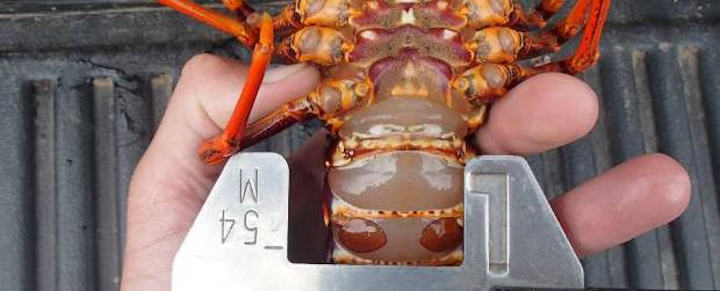Non-compliance and fish thieving
Illegal removals from rock lobster fisheries adversely impact on all legitimate extractive users and the fisheries, and have been a feature of the fisheries for many years.
Fish thieves profit from the sacrifices that commercial operators have made to rebuild the resource. They have cost the industry many millions of dollars in:
- foregone Total Allowable Commercial Catch (TACC) re-instatements
- lost income
- quota levies paid (until 1999) to the poaching and blackmarket Output Class of commercial inshore shellfish compliance work undertaken by Ministry of Fisheries Compliance personnel.
The NZ RLIC would welcome any opportunity to make a positive contribution to:
- the evaluation of fish thieving
- implementation of an official response to consistently expressed community concerns about the efforts of fish thieves and the consequences to our fisheries.
Black market offending
Recent media reports have again highlighted unacceptable levels of offending by fish thieves servicing a black market for high value, low volume seafood products.
Illegal unreported removals of rock lobsters have been of sufficient magnitude to seriously compromise credible regional harvest initiatives that held promise of biological and economic benefits, such as in the case of CRA3 (Gisborne/East Coast).
Efforts to constrain offending
As a consequence of the methodology used by the Ministry of Fisheries when recommending allowances to be set within TACs, the rock lobster industry directly subsidises fish thieves. That situation has long been regarded as inequitable, but has also provided a catalyst for some creative approaches to reducing the amount of illegal unreported removals from rock lobster fisheries.

The rock lobster industry has consistently tried to work with the Ministry of Fisheries to at least constrain the level of offending. The NZ RLIC has promoted, through the NRLMG, the development and implementation of rock lobster stock specific enforcement and compliance strategies.
These efforts have been met with limited success, however the NZ RLIC sees further opportunity because of the Ministry of Primary Industries organizational reform and re-emergence of a Fisheries New Zealand (FNZ).
The Target Enforcement programme
In 1994 the rock lobster industry initiated a Target Enforcement programme in collaboration with the then Ministry of Fisheries in an effort to constrain the unacceptably high levels of illegal removals from lobster fisheries. Unfortunately that project was terminated because of uncertainty over the legal status of the contract with the Ministry of Fisheries, but it remains a demonstration of industry commitment to protect and enhance rock lobster stocks.
Product identification
Faced with the termination of that initiative, the rock lobster industry commenced the research and development of a rock lobster ‘security tag’ that would enable easy identification of legal rock lobster offered for sale on the NZ domestic market.
The research and development of the security tag required significant investment of industry funds and a considerable period to overcome the complex technical, design, hygiene, and animal welfare considerations associated with affixing an easily recognised and tamper-proof tag to a live or cooked/frozen rock lobster.
Trials
The security tag concept was publicly launched at Seafood Week in May 1999. It was limited to a voluntary trial by rock lobster wholesalers in the Auckland/Northland regions, and it aimed to test:
- the operational rigour of the tag design
- the efficiency and security of distribution and registry systems
- consumer acceptance.
The tag system has worked well enough to become an industry standard for domestic sales of rock lobsters from the CRA7 (Otago) fishery.
Another trial was run in Kaikoura over the 2012/13 summer period and in collaboration with local Ministry of Fisheries Compliance personnel. The trial highlighted the possible advantages in making product identification mandatory for all domestic sales of rock lobsters, but also noted that industry tags may not be the most cost-effective solution.
Regulation is required
Industry is convinced that product identification alone will not be sufficient to constrain illegal removals and illegal sales opportunities. Concurrent amendments to recreational regulations are also necessary.
Regulatory proposals to introduce an identification system for lobsters landed by recreational users in CRA5 (Canterbury Marlborough) and CRA2 (Bay of Plenty) are strongly supported by industry and in our view, should be expanded across all management areas.
